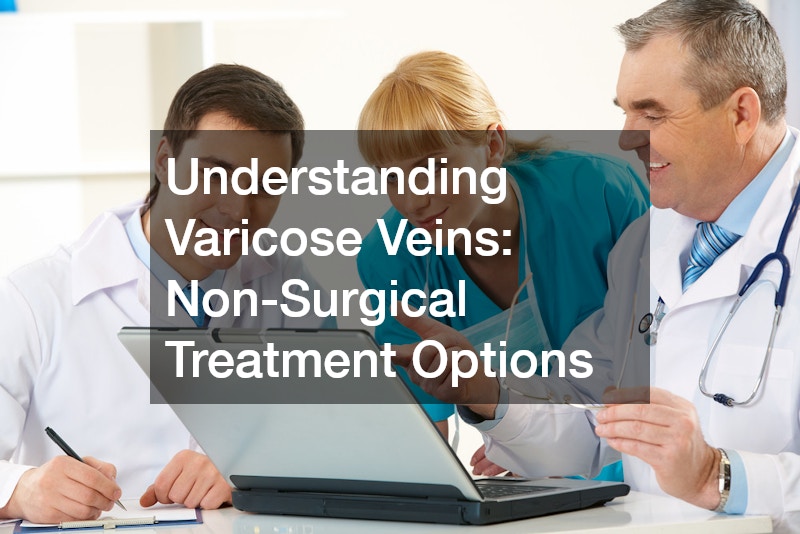Disclaimer: This website provides health information for educational purposes only and is not a substitute for professional medical advice, diagnosis, or treatment. Always seek the guidance of a qualified healthcare provider with any questions you may have.
Varicose veins are enlarged, twisted veins that are often visible just beneath the skin. They typically appear in the legs due to increased pressure in the veins from standing or walking for extended periods. While varicose veins can be a cosmetic concern for some, they may also cause discomfort, including aching, swelling, and heaviness in the legs. Fortunately, there are several non-surgical treatment options available for those looking to manage their varicose veins without the need for invasive procedures.
Lifestyle Changes
The first line of defense against varicose veins is often lifestyle modification. Regular exercise can improve circulation and reduce pressure in the veins, helping to prevent the condition from worsening.
Walking, swimming, or cycling are great activities to promote better blood flow. Additionally, maintaining a healthy weight reduces the strain on the veins, preventing further dilation and discomfort.
Elevating the legs whenever possible is another simple yet effective method for alleviating symptoms. By raising the legs above heart level, gravity helps blood flow more efficiently back toward the heart, reducing the pooling that can cause varicose veins.
Compression Stockings
One of the most widely recommended non-surgical treatments is the use of compression stockings. These specially designed stockings help apply pressure to the legs, encouraging better blood flow and reducing swelling. They are available in various strengths, with some requiring a prescription. Wearing compression stockings during the day can alleviate discomfort and prevent further development of varicose veins, although they won’t eliminate them completely.
Sclerotherapy
Sclerotherapy is a minimally invasive procedure where a special solution is injected into the affected veins. This solution irritates the lining of the vein, causing it to collapse and eventually be absorbed by the body. Sclerotherapy is ideal for smaller varicose veins and spider veins. It is often performed in a doctor’s office and requires no anesthesia, making it a popular choice for patients seeking a quick, non-surgical fix.
Endovenous Laser Therapy (EVLT)
Endovenous Laser Therapy, or EVLT, is a more advanced non-surgical option that uses laser energy to close off varicose veins. A small fiber is inserted into the vein, and the heat from the laser causes the vein to collapse and seal shut. Over time, the body reabsorbs the vein, and blood is naturally redirected to healthier veins. EVLT is often used for larger varicose veins and has a high success rate with minimal discomfort and downtime.
Radiofrequency Ablation
Similar to EVLT, radiofrequency ablation uses heat to close off varicose veins. Instead of a laser, this technique employs radiofrequency energy to heat the vein walls, causing them to collapse. Like EVLT, the body reabsorbs the vein, and circulation is improved in the treated area. Radiofrequency ablation is another effective non-surgical option with quick recovery times.
In conclusion, non-surgical treatments for varicose veins offer effective solutions for managing symptoms and improving appearance. Whether through lifestyle changes, compression stockings, or minimally invasive procedures like sclerotherapy or EVLT, patients have a variety of options to address this common condition.
Watch the video above to learn more about varicose veins: non-surgical treatment options!
.
